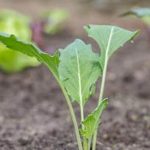Are you tired of battling pesky weeds in your vegetable garden? In this article, we will delve into the world of weed control for vegetable gardens. Whether you are a seasoned gardener or just getting started, understanding the impact of weeds and the different methods for controlling them is essential for a successful harvest.
Weeds can wreak havoc on your vegetable garden, competing with your plants for water, sunlight, and nutrients. Recognizing the impact of weeds on your garden is the first step towards effective weed control. From inhibiting plant growth to harboring pests and diseases, weeds can significantly reduce the yield and quality of your vegetables if left unchecked.
In the following sections, we will explore the common types of weeds found in vegetable gardens, as well as various methods for manual weed control. We will also discuss chemical and organic weed control options, along with tips for selecting the right weed control products. By the end of this article, you’ll have a comprehensive understanding of how to maintain a weed-free vegetable garden and maximize your harvest.
Understanding the Impact of Weeds on Vegetable Gardens
Weed control for vegetable gardens is an essential aspect of maintaining a healthy and productive garden. Weeds can have a significant impact on the overall health and yield of vegetable plants if left uncontrolled. Understanding the impact of weeds on vegetable gardens is crucial for implementing effective weed control strategies.
Competition for Resources
One of the primary impacts of weeds on vegetable gardens is their ability to compete with vegetable plants for essential resources such as water, nutrients, and sunlight. Weeds can quickly overtake the garden and deprive vegetable plants of the resources they need to thrive. This competition can lead to stunted growth, reduced yield, and overall poor performance of vegetable plants.
Increased Risk of Disease and Pest Infestation
Weeds in vegetable gardens can also serve as hosts for various pests and diseases that can spread to the vegetable plants. By providing shelter and food sources for harmful organisms, weeds increase the risk of pest infestation and disease outbreak in the garden. This can further compromise the health and productivity of the vegetable plants.
Negative Aesthetic Impact
In addition to affecting the health and yield of vegetable plants, weeds also have a negative aesthetic impact on vegetable gardens. Overgrown weeds can make a garden appear unkempt and unsightly, detracting from its visual appeal. This aesthetic impact may not only be displeasing to the eye but may also affect one’s gardening motivation.
Understanding these impacts underscores the importance of implementing effective weed control measures in vegetable gardens to ensure optimal growing conditions for vegetables.
Common Types of Weeds in Vegetable Gardens
Weeds are the unwanted plants that grow in vegetable gardens, competing with the vegetables for water, nutrients, and sunlight. It is important to be able to recognize the common types of weeds that can infiltrate vegetable gardens in order to effectively control them.
Below are some of the most common types of weeds found in vegetable gardens:
- Dandelions: These plants have bright yellow flowers and deeply toothed leaves. They spread quickly and can easily take over a garden if not controlled.
- Crabgrass: This annual weed has coarse, wide blades and spreads through seeds. It thrives in compacted soil and can quickly smother vegetable plants.
- Bindweed: Also known as creeping Jenny, this weed has heart-shaped leaves and climbing vines that wrap around other plants. It can be very difficult to eradicate once established in a garden.
- Chickweed: A low-growing weed with small white flowers, chickweed can quickly spread and compete with vegetables for resources.
Identifying these common weeds is the first step towards effective weed control for vegetable gardens. Once you are able to recognize these weeds, you can choose the best methods for controlling them based on their specific characteristics.
It is important to note that different regions may have different prevalent weed species, so it’s crucial for gardeners to become familiar with the types of weeds commonly found in their area. By gaining knowledge about common weeds, gardeners can better plan and execute their weed control strategies for their vegetable gardens.
Methods for Manual Weed Control in Vegetable Gardens
Manual weed control in vegetable gardens is a crucial aspect of maintaining a healthy and productive garden. It involves physically removing weeds by hand or using simple tools to prevent them from competing with your vegetables for water, nutrients, and sunlight. Implementing effective manual weed control methods can help prevent the need for chemical weed control options and promote a more sustainable and eco-friendly garden environment.
Hand Pulling
One of the most common and effective methods for manual weed control in vegetable gardens is hand pulling. This involves simply bending down and pulling weeds out from the root by hand. It is important to ensure that the entire root system is removed to prevent regrowth. Hand pulling is best done when the soil is moist, making it easier to remove weeds without disturbing the surrounding vegetable plants.
Use of Hand Tools
Another method for manual weed control in vegetable gardens is the use of hand tools such as hoes, trowels, and weeders. These tools can be used to dig out weeds or break up the soil around them, making it easier to pull them out by hand. Hoes can also be used to slice off weeds just below the soil surface, preventing regrowth. It is important to be careful when using tools around vegetable plants to avoid accidental damage.
Mulching
Mulching is another manual weed control technique that involves covering the soil around vegetable plants with organic materials such as straw, leaves, or wood chips. Mulch acts as a physical barrier against weed growth by blocking sunlight from reaching weed seeds and preventing them from germinating. Additionally, mulch helps retain soil moisture and improve soil structure, benefiting both vegetables and flowers while suppressing weeds effectively.
Overall, implementing manual weed control techniques in your vegetable garden can help create a healthier growing environment for your crops while reducing the need for chemical interventions. Regularly monitoring your garden for weeds and taking proactive measures when necessary will ensure that your vegetables thrive without unwanted competition from invasive plants.
Chemical Weed Control Options for Vegetable Gardens
When it comes to effectively managing weed control for vegetable gardens, chemical weed control options can be a powerful tool. However, it’s important to use these products carefully and responsibly to ensure the health and safety of both your plants and the environment. Here are some popular chemical weed control options for vegetable gardens:
- Pre-emergent herbicides: These types of herbicides are applied to the soil before weed seeds germinate, creating a barrier that prevents weed growth.
- Post-emergent herbicides: These herbicides are applied directly to existing weeds, killing them on contact. It’s important to use these products selectively to avoid damaging desirable plants.
- Systemic herbicides: These herbicides are absorbed by the foliage or roots of weeds and then translocated throughout the plant, effectively killing it from within.
It’s crucial to carefully read and follow the instructions on any chemical weed control product you use in your vegetable garden. Always wear protective clothing and equipment when applying these products, and be mindful of potential runoff into surrounding areas.
In addition, consider the specific needs of your vegetable plants when choosing chemical weed control options. Some plants may be more sensitive to certain chemicals, so do your research or consult with a professional before using any product in your garden. By using chemical weed control options responsibly, you can effectively manage weeds while maintaining the health and productivity of your vegetable garden.
Organic Weed Control Techniques for Vegetable Gardens
When it comes to maintaining a healthy and productive vegetable garden, organic weed control techniques are essential. Using natural methods to manage and prevent the growth of weeds not only helps to protect the environment, but also ensures that your vegetables are safe for consumption.
One of the most effective organic weed control methods is mulching. Mulch helps to suppress weed growth by blocking sunlight and preventing seeds from germinating. Organic materials such as straw, wood chips, or shredded leaves can be used as mulch in vegetable gardens. It also helps retain moisture in the soil and improve its overall health.
Another natural approach to weed control for vegetable gardens is hand weeding. While manual labor can be time-consuming, it is an effective way to remove weeds without the use of chemicals. Regularly inspecting your garden and pulling out weeds by hand can help prevent them from spreading and competing with your vegetables for nutrients and water.
Additionally, companion planting is a technique that involves growing certain plants together to deter pests and suppress weeds. For example, planting strong-smelling herbs like basil or mint among your vegetables can help repel pests and inhibit weed growth. This organic method not only enhances the biodiversity of your garden but also contributes to weed control for vegetable gardens without using any harmful substances.
Selecting the Right Weed Control Products for Vegetable Gardens
When it comes to selecting the right weed control products for your vegetable garden, it’s important to consider the specific needs of your plants and the type of weeds that are prevalent in your garden. Before making any decisions, it’s crucial to determine whether you want to use chemical or organic weed control methods.
For those who prefer using chemical weed control options, there are several products available in the market such as pre-emergent herbicides, post-emergent herbicides, and selective herbicides. Pre-emergent herbicides are effective at preventing weed seeds from germinating, while post-emergent herbicides target weeds that have already sprouted.
Selective herbicides are designed to specifically target certain types of weeds while leaving your vegetables unharmed. It’s essential to carefully read and follow the instructions on these products to avoid any damage to your vegetable plants.
On the other hand, if you opt for organic weed control techniques, there are various options such as mulching, hand weeding, and using natural herbicidal sprays. Mulching not only helps suppress weed growth but also retains soil moisture and regulates soil temperature.
Hand weeding involves physically removing weeds from the garden beds, which can be time-consuming but is an effective method for small areas. Natural herbicidal sprays made from ingredients like vinegar or salt provide a non-toxic approach to controlling weeds without harming your vegetable crops.
It’s important to note that regardless of the weed control products you choose, always ensure that they are safe for use around edible crops and carefully follow all application instructions provided by the manufacturer. Considering these factors will help you select the most suitable weed control products for your vegetable garden while maintaining a healthy environment for your plants.
| Weed Control Product Type | Description |
|---|---|
| Chemical Weed Control | Includes pre-emergent herbicides, post-emergent herbicides, and selective herbicides. |
| Organic Weed Control | Includes mulching, hand weeding, and natural herbicidal sprays made from non-toxic ingredients. |
Best Practices for Maintaining Weed Control in Vegetable Gardens
Maintaining weed control in vegetable gardens is essential for the health and productivity of your plants. Weeds compete with vegetables for water, sunlight, and nutrients, which can lead to stunted growth and poor yields. To effectively manage weed control in your vegetable garden, it’s important to implement best practices that not only eliminate existing weeds but also prevent new ones from taking over.
One of the best practices for maintaining weed control in vegetable gardens is to regularly mulch around your plants. Mulching not only helps retain moisture and regulate soil temperature but also acts as a barrier to prevent weed growth. Organic materials such as straw, grass clippings, or wood chips can be used as mulch to smother weeds and improve the overall health of your garden.
Another important practice for maintaining weed control in vegetable gardens is proper spacing between plants. Crowded plants provide more opportunities for weeds to take hold, as they create shady areas where weeds can thrive. By giving your vegetables adequate space to grow, you can reduce the likelihood of weed infestations and make it easier to spot and remove any unwanted growth.
In addition to these practices, regular cultivation of the soil can also help maintain weed control in vegetable gardens. This process breaks up the soil surface, disrupts weed seedlings, and exposes them to air and sunlight, ultimately preventing them from establishing themselves. However, care should be taken when cultivating around vegetable plants to avoid damaging their roots.
| Best Practices | Details |
|---|---|
| Regular Mulching | Use organic materials like straw or wood chips for a natural barrier against weeds. |
| Proper Plant Spacing | Create ample space between vegetables to reduce opportunities for weed growth. |
| Regular Cultivation | Cultivate the soil to disrupt weed growth without harming vegetable plants. |
Conclusion and Tips for Successful Weed Control in Vegetable Gardens
In conclusion, implementing effective weed control for vegetable gardens is essential for maintaining the health and productivity of your plants. Weeds can compete with vegetables for water, nutrients, and sunlight, ultimately stunting their growth and reducing yields. By understanding the impact of weeds on vegetable gardens and being able to identify common types of weeds, gardeners can take proactive measures to keep them under control.
Manual weed control methods such as hand-pulling, hoeing, or mulching can be effective for smaller gardens or for spot treating problem areas. However, for larger vegetable plots or persistent weed issues, chemical weed control options may be necessary. It’s important to carefully select and use these products according to label instructions to minimize harm to desirable plants and the environment.
For those who prefer organic gardening practices, there are also a variety of natural weed control techniques available. These can include mulching with organic materials, using vinegar or other natural herbicides, or implementing companion planting strategies. Regardless of the method chosen, it’s important to regularly monitor the garden for weed growth and take proactive measures to prevent their spread.
By incorporating a combination of manual, chemical, and/or organic weed control techniques and staying diligent with maintenance practices such as regular cultivation and mulching, gardeners can successfully manage weed growth in their vegetable gardens. Taking these proactive measures will contribute to healthier vegetables and a more bountiful harvest in the long run.
Frequently Asked Questions
How Do I Kill Weeds in My Garden Without Killing Vegetables?
Killing weeds in your garden without harming your vegetables can be achieved through manual removal, mulching, and using natural herbicides like vinegar or boiling water. Hand-pulling weeds regularly also helps prevent them from taking over.
Is There a Weed Killer Safe for Vegetable Gardens?
Yes, there are weed killers safe for vegetable gardens. Look for organic or natural options that won’t harm your edible plants. Products containing ingredients like acetic acid, citrus oil, or clove oil can effectively control weeds without posing a risk to your vegetables.
How Do I Keep Weeds Out of My Vegetable Garden?
To keep weeds out of your vegetable garden, consider implementing preventive measures such as using mulch to suppress weed growth, cultivating the soil regularly to disrupt weed seedlings, and installing landscape fabric around your plants. Additionally, practicing crop rotation can help minimize weed growth by interrupting their life cycles.

If you’re looking to get into vegetable gardening, or are just looking for some tips on how to make your current garden better, then you’ve come to the right place! My name is Ethel and I have been gardening for years. In this blog, I’m going to share with you some of my best tips on how to create a successful vegetable garden.





